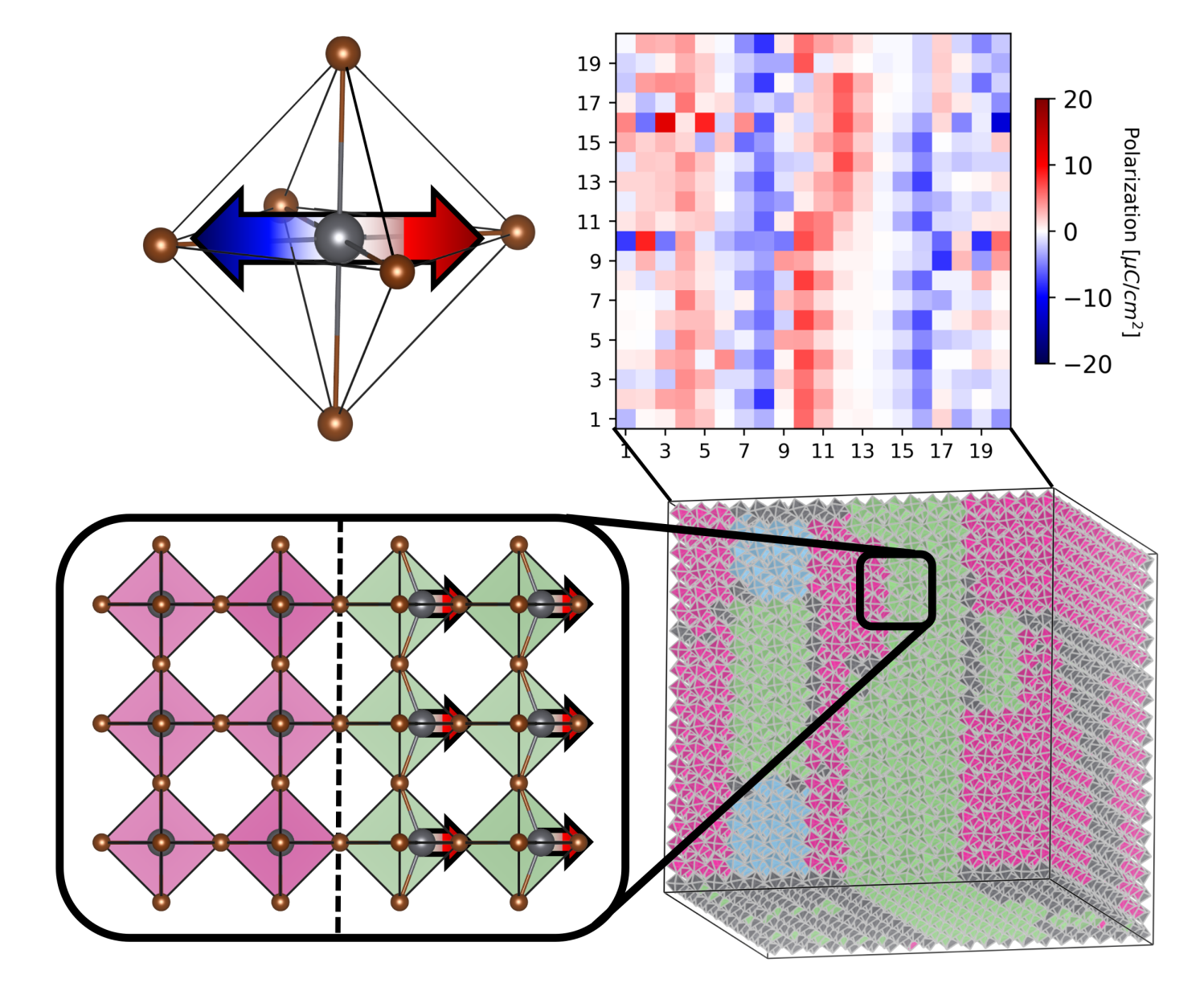
Congratulations to Andrew Grieder and Yuan Ping for their work with Marcos Calegari Andrade, Hiroyuki Takenaka, Tadashi Ogitsu, and Liang Z. Tan on “Carrier Localization and Spontaneous Formation of Two-Dimensional Polarization Domain in Halide Perovskites”, published in Physical Review Letters on September 24! Link to the published article.
This work was also highlighted in the UW-Madison Materials Science & Engineering news here!
Halide perovskites are known for their rich phase diagram and superior performance in diverse optoelectronics applications. The latter property is often attributed to the long electron-hole recombination time, whose underlying physical mechanism has been a long-standing controversy. In this Letter, we investigate the transport and localization properties of electron and hole carriers in a prototypical halide perovskite (CsPbBr3), through ab initio tight-binding nonadiabatic dynamics approach for large-scale (tens of nm size) supercell calculations, to simulate electron and ion dynamics on the same footing. We found distinct structural, lattice polarization, and electron-phonon coupling properties at low (below 100 K) and high temperatures, consistent with experimental observations. In particular, at low temperature we find spontaneous formation of polar grain boundaries in the nonpolar bulk systems, which result in two-dimensional polarization patterns that serve to localize and separate electrons and holes. We reveal phonon-assisted variable-range hopping mostly responsible for low-temperature transport, and their characteristic frequency correlates with temperature-dependent phonon power spectrum and energy oscillation frequency in nonadiabatic dynamics. We answer the critical questions of long electron-hole recombination lifetime at low temperature and offer the correlation among polarization domains, electron-phonon couplings, and photocarrier dynamics.
We acknowledge support from the computational chemical science program within the Office of Science at DOE under Grant No. DE-SC0023301 for the code development of tight-binding Lammps interfaces and parallelization. Part of the materials application and theory validation was supported by NSF under Grant No. CHE-2203633. Part of this work was performed under the auspices of the U.S. Department of Energy by Lawrence Livermore National Laboratory under Contract No. DE-AC52-07NA27344.